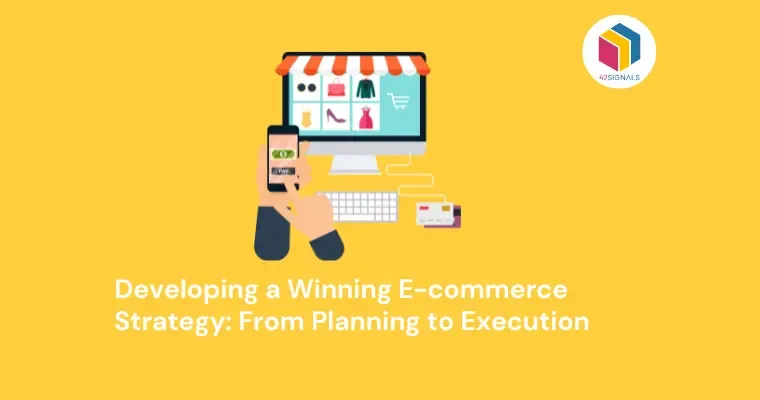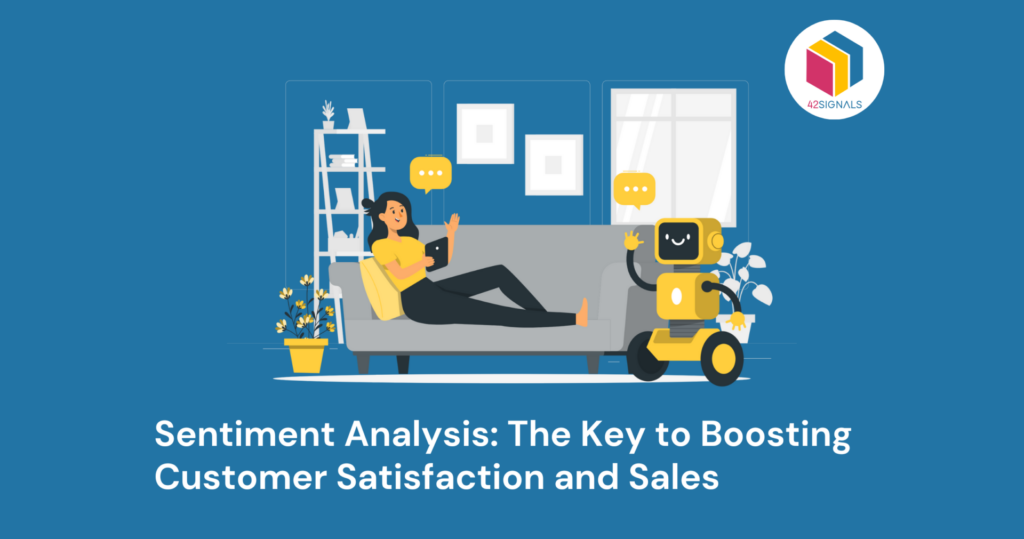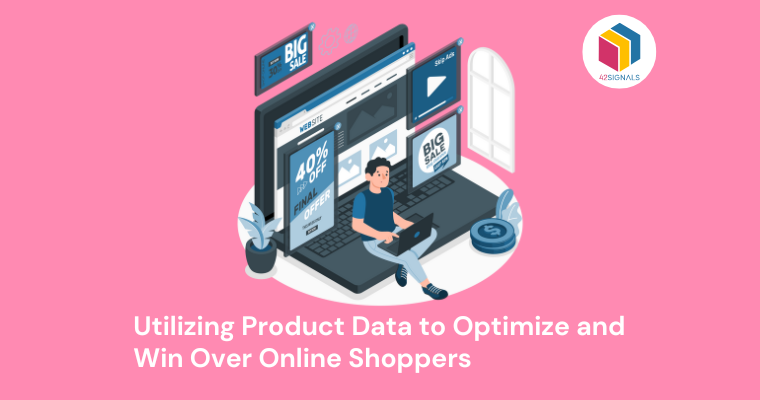When you first start in e-commerce, it can feel like there are a million things to do – and there are. Every store needs to launch a website, establish a supply chain, create a brand, and more. These initial steps are critical – they lay the foundation for your long-term strategy.
But, a great strategy doesn’t just set you up for a great launch, though. It sets you up for long-term success by driving focus.
For example, consider how Amazon started as a simple online bookstore and strategically expanded into different categories, leveraging its strong operational backbone to scale across diverse markets. This demonstrates the importance of a thoughtful approach right from the outset.
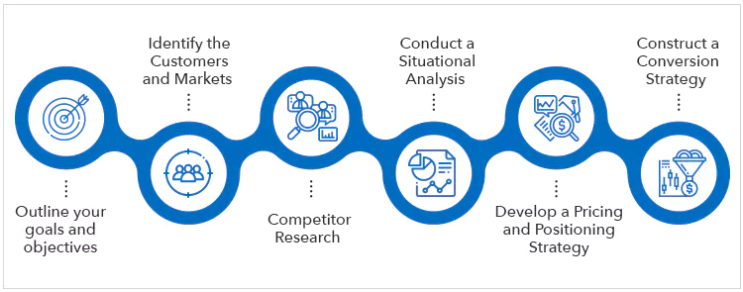
Source: How to develop an ecommerce strategy
A well-crafted e-commerce strategy isn’t just about getting off to a good start; it’s crucial for ongoing success. In the fast-paced world of e-commerce, where time is precious, a smart strategy helps you prioritize essential tasks. This approach ensures that every step you take is a building block for future growth.
What is an Ecommerce Strategy?
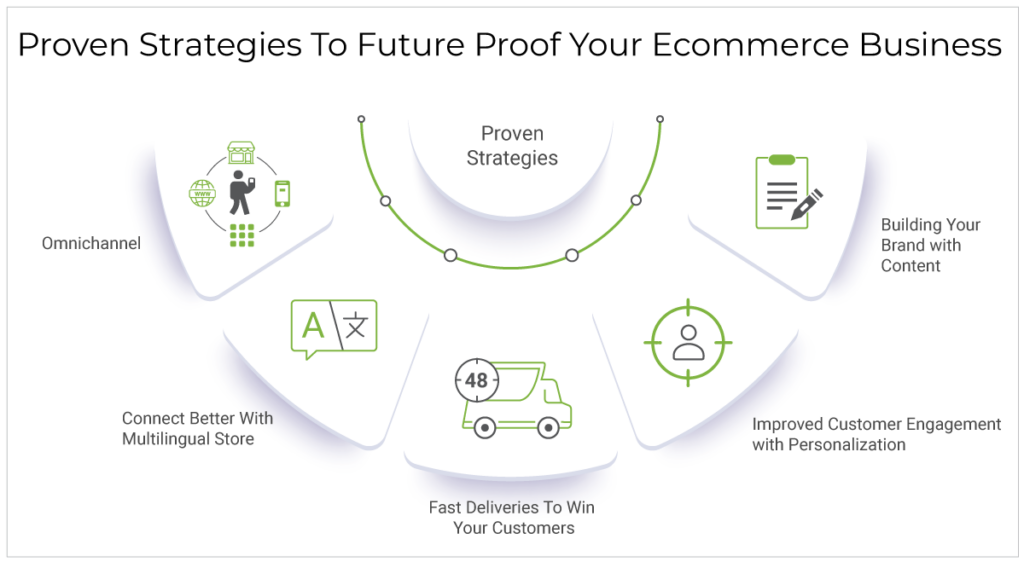
Source: Ecommerce strategies to future-proof your business
An e-commerce strategy is essentially your game plan for success in the online marketplace. It’s all about crafting a tailored approach to showcase your products or services, attract more visitors to your site, turn those visitors into customers, and keep them coming back for more. But remember, there’s no one-size-fits-all strategy! Your approach should be as unique as your brand, considering who your customers are, how you want your brand to be perceived, and the kind of shopping experience you aim to deliver. That’s why it’s important to tailor your strategy to meet your unique goals.
Product Strategy
A strong product strategy is essential for the success of any e-commerce business. It helps you decide not just what to sell, but also how to present, price, and manage your inventory in a way that appeals to your target audience and makes your brand stand out in a crowded market. Ready to craft a product strategy that clicks with customers and sets you apart from the competition? Let us understand the detailed process.
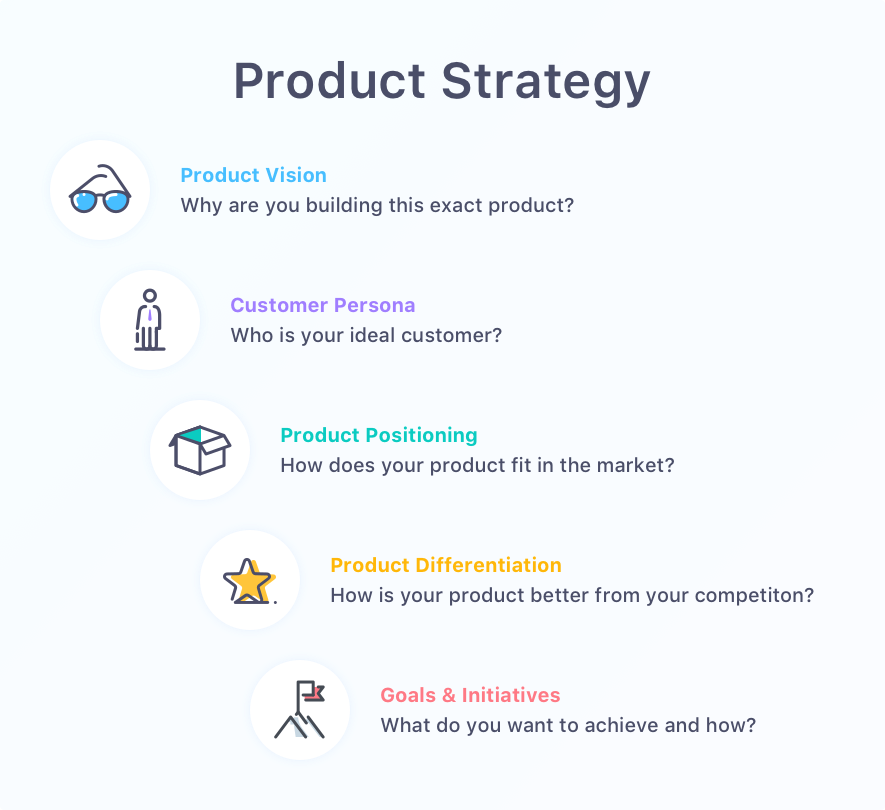
Image Source: Product Strategy
Product Selection and Sourcing
Choosing the right products is the first critical step. Start by diving deep into market research to truly understand what your customers need and where the current market may be lacking. For example, if you’re thinking of starting an eco-friendly beauty brand, focus on offering products that are not only organic but also specifically address skin concerns that aren’t well-served by existing products in your niche. This approach ensures that your offerings are both appealing and necessary, setting you up for success in the competitive e-commerce landscape.
Pricing Strategy
Price needs to be competitive yet profitable. Employ market research to set prices that attract customers while covering costs and delivering a profit margin. Dynamic pricing models, like those used by airlines and hotels, can also be applied to adjust prices based on demand, competition, and other external factors. Ecommerce analytics tools like 42Signals help businesses keep track of price changes in the market.
Branding and Positioning
Your brand positioning should communicate the unique value of your products. Develop a brand story that connects with your customers on an emotional level. For example, if you are selling handcrafted watches, emphasize the artisanal craftsmanship, the heritage of the technique, and how each watch tells a story.
Inventory Management
Efficient inventory management minimizes holding costs and maximizes cash flow. Implement systems for just-in-time inventory if possible, or consider dropshipping to reduce the need for physical storage space. Tools like 42Signals can help track stock availability to forecast demand and manage stock levels effectively.
Product Differentiation
Stand out in a crowded market by ensuring your products offer something unique. This could be through innovative features, superior quality, or exceptional design. For example, Apple stands out in the tech industry not just for its technology, but for its sleek design and user-friendly interface.
Customer Feedback and Product Development
Incorporate customer feedback to continually refine and improve your product offerings. Engage with your customers through surveys, reviews, and social media interactions to gather insights that can inform product development. Continuous improvement based on consumer feedback is key to keeping your offerings relevant and competitive. This is where 42Signals’ solutions like Voice of Customer Analytics(VoC) are important. With VoC, brands can derive insights from customer reviews and feedback.
Customer Strategy
Developing a winning customer strategy is essential for any e-commerce business aiming to succeed in today’s competitive digital marketplace. This strategy isn’t just about selling products; it’s about building relationships and creating a loyal customer base that drives revenue and growth.
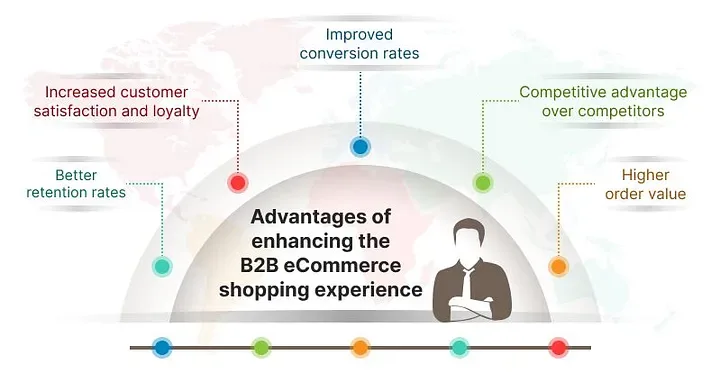
Source: Advantages of enhancing B2B ecommerce shopping experience
Understanding Your Audience
Start by gathering as much data as possible about your customers. Utilize analytics tools to track customer behavior, preferences, and purchasing patterns. These personas will guide your marketing efforts and product development.
Personalization
Use the data collected to personalize every aspect of the customer journey. This can range from customized product recommendations and personalized emails to targeted ads and content that resonates with each segment. Personalization increases the relevance of your interactions, enhancing customer satisfaction and loyalty.
Customer Engagement
Engagement strategies such as interactive content, loyalty programs, regular updates, and responsive customer service are vital. Ensure your content strategy includes engaging elements like videos, blogs, tutorials, and user-generated content to keep your audience interested and engaged.
Seamless Customer Experience
Optimize your website for a seamless user experience with easy navigation, quick load times, and mobile optimization. A smooth checkout process and multiple payment options are critical in reducing cart abandonment rates and increasing conversions.
Customer Service Excellence
Invest in training your customer service team to handle inquiries and issues efficiently and empathetically. Offer support across multiple channels, including live chat, social media, email, and phone. Integrating AI-driven tools like chatbots can enhance your responsiveness and ensure 24/7 support.
Feedback and Continuous Improvement
Actively seek customer feedback through surveys, social media, and direct communication to understand their needs and improve their experience. Analyze this feedback to continually refine your strategies and offerings. Remember, an e-commerce strategy is never static; it evolves as your understanding of your customer deepens.
Crafting a Comprehensive E-commerce Strategy
E-commerce has a lot of moving parts. An e-commerce strategy is a holistic plan for how you’ll build and maintain digital sales channels, attract shoppers who make purchases, and keep customers coming back. Your strategy should help you keep your eye on the revenue and sales and provide a roadmap for decision-making.
Understanding Your Market and Target Customers
Data Analysis: Begin by collecting and analyzing data that helps you understand your customers better. Look into historical sales data, customer demographics, and engagement patterns. Identify how much your customers typically spend, how they interact with your brand, and what their purchasing behaviors tell you about their preferences.
Competitor Insight: Analyze what strategies your competitors are using. Examine the sales channels they utilize and the customer personas they target. This information is invaluable as it not only shows what’s working within your industry but also helps you find your competitive edge.
Developing an E-commerce Marketing Plan
Segmentation and Personalization: With a clear understanding of your market, segment your customer base to tailor more personalized marketing efforts. Different groups may respond better to specific types of messaging, pricing, and promotional tactics.
Search Engine Optimization (SEO): Since a significant portion of online shoppers start their buying process with search engines, integrating SEO into your strategy is crucial. Focus on optimizing your content and website structure to rank well for relevant keywords, ensuring your products appear prominently in search results.
Enhancing Customer Experience
Digital Storefront Improvements: Your website’s design, ease of navigation, search functionality, and overall user-friendliness are pivotal in converting visits into sales. Optimize your site to offer intuitive product searches, clear categories, and simple navigation paths to make shopping as straightforward as possible.
Ensuring Channel Cohesion
Unified Shopping Experience: Many customers use multiple channels during their shopping journey. Ensure that whether they are using social media, mobile apps, or your website, the experience remains consistent. Integration across these platforms should allow customers to seamlessly switch between them without losing context or functionality, maintaining uniformity in product availability, promotions, and customer support.
Optimizing Post-Purchase Processes
Efficient Order Management: The final part of your strategy should focus on order fulfilment and post-purchase satisfaction. Implementing efficient order management systems and choosing the right logistics partners are crucial for timely deliveries. Additionally, consider strategies to make shipping both cost-effective and reliable to enhance customer satisfaction and encourage repeat business.
In Conclusion
Markets change, customer demand fluctuates, and expectations rise over time. Your strategy should guide your business decisions, but it’s important to keep it updated to reflect new trends in e-commerce and changing customer behaviors.
You’ll need maximum flexibility to quickly make changes. The right technology will go a long way, like 42Signals – a trusted e-commerce analytics platform to help you track, optimize, and grow your online sales.

